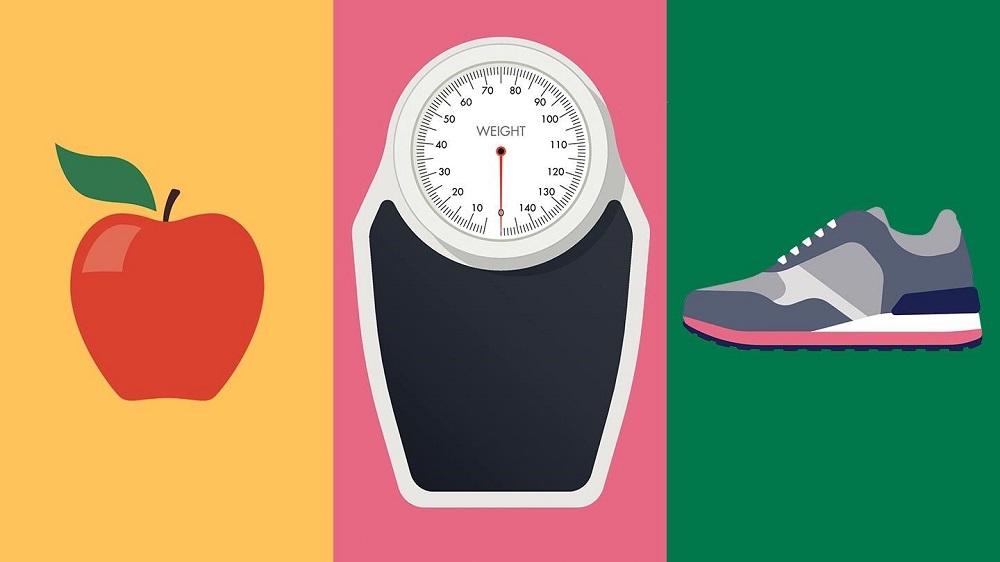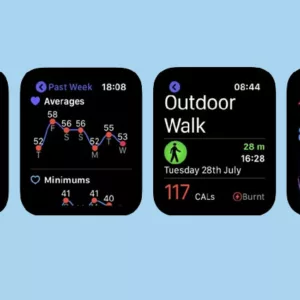Diabetes can affect your weight, and your weight can affect your diabetes. Whether you have type 1 or type 2 diabetes may have an impact on your treatment options.
High glucose levels are the hallmark of diabetes, a metabolic disorder. Diabetes occurs when the body either does not produce enough insulin or is unable to effectively use the insulin it does produce. Blood sugar levels are regulated by insulin after a meal.
Because they can’t use the sugar they eat for energy, people with type 1 diabetes may unintentionally lose weight. Diabetes occurs when the pancreas produces no insulin, and sugar is flushed out of the body through urination.
A person’s risk of developing type 2 diabetes increases if they are overweight or obese. Insulin resistance is a condition that affects those with type 2 diabetes. As a result, the pancreas can produce insulin, but the body is unable to properly utilize it. The pancreas attempts to compensate by producing additional insulin but eventually fails.
Type 2 diabetes and some cases of type 1 diabetes can be treated with weight loss. It can be attained through changing diet, start exercising, and certain medications.
What causes weight loss in people with diabetes?
Insulin is a hormone produced by the body to aid in the absorption of sugar (glucose) from food. For your brain and muscles to function, insulin converts sugar into energy that comes from glucose.
One of two things will happen if you have diabetes: your body will produce insufficient insulin or it will be unable to properly utilize the insulin it does produce. Consequently, your blood sugar rises because the sugar in your bloodstream does not get converted into energy.
Your body doesn’t get the fuel it needs because the sugar stays in your blood. Consequently, the body begins to burn fat and muscle for energy, which can lead to weight loss without any apparent cause. To ensure you don’t face any other health risks from being underweight, you need to keep track of your ideal weight. This male-female height and weight chart can help you out.
Most people are diagnosed with Type 1 and Type 2 diabetes. Type 1 diabetes occurs when the body produces insufficient or no insulin as a result of the immune system attacking insulin-producing cells. The onset of Type 1 diabetes in childhood is common.
Type 2 diabetes occurs when the body either does not produce enough insulin or is unable to use it. Obesity and inactivity, as well as genetics, are thought to play a role in the development of type 2 diabetes, which commonly affects people in their 40s and 50s.
The Diabetes Benefits of Losing Weight
Sugar builds up in the bloodstream when your body is unable to properly respond to insulin, resulting in type 2 diabetes. Being overweight or obese increases your risk of developing diabetes and makes it more difficult to control your blood sugar levels.
Type 2 diabetes risk in adults can be reduced by over half by losing just 5 to 7 percent of body weight, according to research.
Losing weight can have numerous health benefits for people with type 2 diabetes. Among them:
- blood sugar levels are easier to control when insulin resistance is reduced.
- energy and a more positive outlook
- mobility advancements
- cholesterol, triglycerides, and low-density lipoprotein
- complications from diabetes, such as kidney or heart disease, are less likely to occur
When weight loss is successful, blood sugar levels can return to normal and the need for type 2 diabetes medication can be eliminated.
You may gain weight when you start taking insulin for type 1 diabetes. You may need to adjust your calorie and carbohydrate intake and insulin dose to lose weight, depending on your medical condition.
With type 1 diabetes, insulin resistance can occur, and weight loss can aid in reducing insulin requirements.
Medication for diabetes and weight loss
Weight loss can be aided by several diabetes medications, including:
Metformin
Metformin, a common diabetes medication, is used to regulate blood sugar levels in the body. It may also help some people shed pounds over time, according to studies. You can get all the diabetes medications online through pharmaceutical websites.
GLP-1 agonists
Angiotensin-converting enzyme-1 agonists (ACEs) are powerful tools for lowering blood sugar.
The following are a few examples:
- liraglutide (Ozempic)
- exenatide extended-release (Bydureon)
- liraglutide (Victoza)
- dulaglutide (Trulicity)
SGLT2 inhibitors
The second class linked to weight loss and improved blood sugar control is the SGLT-2 inhibitors. Among them:
- dapagliflozin (Farxiga)
- canagliflozin (Invokana)
- empagliflozin (Jardiance)
Diagnosis
The glycated hemoglobin (A1C) test is commonly used to determine whether or not someone has type 2 diabetes. Blood sugar levels over the previous two to three months can be determined with the help of the fast-acting oral glucose tolerance test. The following is the interpretation of the findings:
- Under 5.7 percent of the population is considered normal.
- Prediabetes affects 5.7 percent to 6.4 percent of the population.
- Diabetes is diagnosed when blood glucose levels are 6.5% or higher in both tests.
Your doctor may use the following tests if the A1C test is unavailable or if you have certain conditions that interfere with an A1C test:
A simple blood sugar checkup. Blood sugar levels are measured in milligrams of sugar per deciliter (mg/dL) or millimoles of sugar per liter (mmol/L). It doesn’t matter how long it’s been since your last meal; if your blood sugar level is above 200 mg/dL (11.1% mmol/L), you likely have diabetes.
Test of blood sugar levels after fasting. After a full night’s sleep, a blood sample is collected. The following is how the results are interpreted:
- Normal blood sugar levels are less than 100 mg/dL (5.6 mmol/L).
- Prediabetes is defined as a blood glucose level of 100 to 125 mg/dL (5.6 to 6.9 mmol/L).
- Diabetic patients have blood glucose levels of 126 mg/dL (7 mmol/L) or higher on two separate tests.
Test of oral glucose tolerance. Except in cases of pregnancy, this is a less common test. The doctor’s office will require you to fast overnight and then consume a sweet liquid. For the next two hours, patients’ blood sugar levels will be monitored regularly. The following is how the results are interpreted:
- Normal blood sugar levels are below 140 mg/dL (7.8 mmol/L).
- Prediabetes is defined as blood sugar levels that range between 7.8 mmol/L and 11.0 mmol/L, or 140 to 199 mg/dL.
- After two hours, a blood sugar level of 200 mg/dL (11.1 mmol/L) or higher indicates diabetes.
Treatment
Type 2 diabetes management includes the following:
- Eating a nutritious diet
- Engage in regular exercise
- Losing weight
- Medication for diabetes or insulin therapy may be required.
- Monitoring blood sugar levels.
Your blood sugar levels will be more stable if you take these steps. It could prevent or delay complications.
Healthy diet
There is no one-size-fits-all diabetes diet, contrary to popular belief. However, it’s essential to focus your diet on the following:
- Having a set time each day to eat and snack on nutritious foods
- Reduced caloric intake
- Fruits, vegetables, non-starchy vegetables, and whole grains are all good sources of high-fiber foods.
- Meats and fish that are low in fat should be consumed in moderation.
- Olive oil and canola oil are both excellent sources of healthy fats for cooking.
- Sweets, starchy vegetables, and refined grains should be reduced.
Reduced caloric intake
Your doctor may recommend that you see a registered dietitian, who can assist you in the following ways:
- Identify the healthiest foods in your diet.
- Plan nutritious, well-balanced meals.
- Begin forming new habits and eliminating obstacles to doing so
- To maintain more stable blood sugar levels, keep track of your carbohydrate intake.
Loss of weight
Better blood sugar, cholesterol, triglyceride, and blood pressure control are benefits of losing weight. As little as 5 percent of your body weight can help improve these factors if you’re overweight. In contrast, the greater the weight loss, the greater the health and disease management benefits.
Your doctor or dietitian can assist you in setting realistic weight-loss goals and recommending lifestyle changes that will help you achieve those goals.
Lifestyle Modifications and Home Remedies
In type 2 diabetes, taking the necessary precautions can significantly reduce your risk of serious, even life-threatening complications. Consider the following advice:
- Commit to controlling your blood sugar. Educate yourself as much as possible on type 2 diabetes. Make it a point to eat healthily and get plenty of exercises daily.
- Make an appointment for a yearly physical and regular eye exam. If you have diabetes, your regular checkups aren’t meant to replace regular physicals or eye exams.
- Keep your teeth clean. Gum infections can become more serious if you have diabetes. Floss and brush your teeth regularly, and don’t forget to get a dental exam every six months. If your gums bleed, are red, or are swollen, you should see your dentist immediately.
- Maintain healthy blood pressure and cholesterol levels. Healthy eating and regular exercise go a long way toward reducing high blood pressure and cholesterol levels, respectively. Take your medication as prescribed. –
- Ask your doctor if he or she can assist you in quitting smoking or using other forms of tobacco. Smoking raises your risk of developing diabetes-related complications, such as blindness and kidney failure. Talk to your doctor about ways to kick the habit of smoking.





